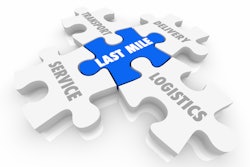
The Coronavirus disease (COVID-19) pandemic has exposed holes in the processes, policies, supply chains and overall resiliency of many businesses. Irrespective of size and scale, an organization’s ability to adapt to secure their supply chains, cashflow and workforce remains an ongoing challenge. It’s reassuring to see evidence of a change in the way that many are thinking about resiliency. With the majority ramping up their efforts to put the technology + people + processes in place to secure their futures.
Yet, as is often the case, significant change can be held back by the belief that what has worked in the past will continue to work in the future. My view is that this attitude will characterize the businesses who will thrive, in times of change and uncertainty, and those who do not. Take procurement as an example. Effective procurement can have a major impact on the revenue and profitability of a business. Better management of procurement operations not only drives down costs; but can also lead to significant cost savings.
Unfortunately, some businesses fail to connect those savings with increased profits. Increasing profit through sales during a global pandemic can be tricky, but putting robust spend and procurement policies processes in place can be a lot easier. How a business views, values and positions its procurement function remains key, and it is now widely accepted that a resilient, future-proof business has complete and on-demand visibility over its committed spend and outgoing liabilities. Indeed, the businesses I have spoken to, which have been able to adapt quickly to the challenges of the pandemic, have all had the following things in common:
· An accurate clear view of their supply chain to identify any areas of concern or new capabilities
· Real-time reporting on current liabilities and cashflow to help understand the financial picture
· Access to up to date spend analysis to identify where costs can be reduced
· Proactively able to make data-driven, fast decisions based on actionable insights from the data above.
Procurement cuts across all four of these abilities and smart procurement professionals can drive real measurable value from these areas, when they are valued as a strategic partner by their executive team, rather than a mere operational lever to help to drive cost savings.
Making procurement more prominent
Does your procurement leader have a seat at the executive table? Or, are they at least enabled to strategically transform your business? Unfortunately, the chances are they are not. According to a recent research study by Kearney, more than half of CFOs surveyed thought of procurement as a transactional function that is primarily useful for negotiating hard cost savings, rather than a strategic partner helping to shape the organization and drive real value.
So, why are organizations ignoring such a strategic partner? And, why in an environment that is driven by the ability to produce more with less, to create more output with less input and make everything happen faster are procurement’s policies and processes still sitting on the fringes of business decision making?
Businesses are ecosystems in themselves; they have dependencies, they have limitations, they have policies and they have people connected to certain roles that could potentially be replaced by technology. Businesses are like cities, where siloed areas find themselves competing for resources and fighting to secure their own.
These issues are born out of technical evolution, leading to a lack of connectivity and simple user experience. It is not because these organizations and their leadership teams do not know what to do; it is that they don’t have the base data to drive actionable insights. In this environment with poor quality, hard-to-access data in clunky and complex legacy platforms that typically do not talk to each other, which leads to:
· Poor quality data leading to immature or wrong decisions
· Complexity making change and projects typically ineffective and very expensive
· A focus on processes, instead of customer service, innovation and automation
· Resource heavy operations that focus more time on goods coming in the door than the value that is being returned.
Procurement leaders are one of the biggest casualties of this environment, unable to drive the real strategic value that they can unlock for a business so are resigned to focusing on hard cost savings and negotiating contracts. In this hamstrung environment, it is easy to see why procurement leaders typically do not have a seat at the executive table.
Procurement leaders and teams that are enabled to act as a strategic partner can deliver huge value across the organisation. An enabled strategic procurement department can be a real disruptive innovator in the business through:
· Actionable insights to drive continued cost savings to the business
· Creating more value-driven supplier relationships that drive your business forward:
o Helping your business out when you are in trouble such as quicker order turnaround times or longer payment term
o Product/service innovation, where suppliers are experts in their field may be able to find more effective ways of solving your customers problems or accelerate your speed to market with a new product line
o Reduce the risk in your supply chain
· Driving a culture across the organization of focusing on achieving the largest amount of value for the lowest amount of money
· Bringing a different, cross-business perspective to strategic decision-making
· Providing a significant contribution to achieving sustainability targets through leveraging supplier relationships.
· Providing complete and detailed visibility of spend across all suppliers, categories and business units
What needs to change?
We have seen the importance of accurate spend and supplier data for businesses and have described the strategic value which procurement leaders can deliver when they have access to this data. So, how can businesses unlock this value? Well, how about starting by uniting people and processes with the right procurement technology? Procurement technology pertains to platforms that enable procurement and finance processes to become as visible as possible to internal and external customers. Technology that actively drives your policies and processes forward, whilst delivering accurate and real-time data that is benchmarked against industry standards or otherwise comparable reference points.
There is no doubt that unifying the right people, processes and technology has been the key enabler for businesses, who have enabled their procurement leaders. Increasing their influence, allowing them to demonstrate their strategic value and educating the wider business to look at value more broadly than just cost-cutting. Businesses that have already embarked on digital transformation programs, including procurement automation, are now reaping the rewards and successfully navigating the disruption caused by the COVID-19 pandemic. Are you ready to join them?















